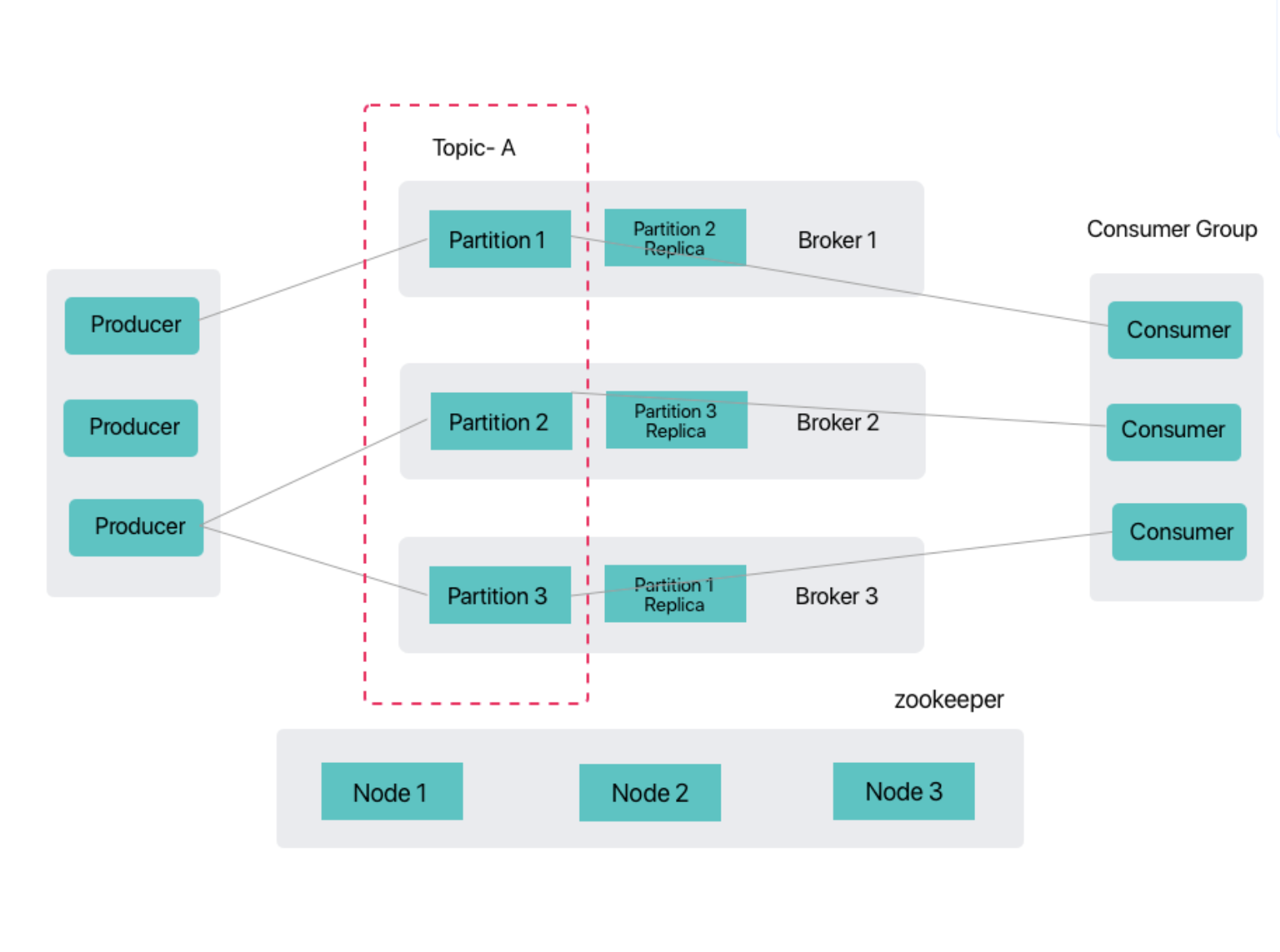Architecture
Alauda Streaming Service for Kafka leverages Kafka's distributed architecture to provide a proven high-availability solution, meeting enterprise requirements for high-throughput, reliable, and elastically scalable message queuing systems.
TOC
ZooKeeper Coordination Mode
The ZooKeeper coordination mode is the traditional distributed coordination implementation for Kafka, utilizing a ZooKeeper cluster to manage Kafka cluster metadata, Broker registration, and controller election, among other core functionalities. This mode has the following characteristics:
- Mature and Stable: Verified in large-scale production environments, it has extremely high reliability.
- Separation of Concerns: ZooKeeper focuses on cluster coordination, while Kafka brokers concentrate on message processing.
- Automatic Failover: Controller automatic election achieved via ZooKeeper's watcher mechanism.
- Metadata Management: Stores key metadata such as topic partition information and consumer offsets.
- Expansion Dependency: Requires additional maintenance of a ZooKeeper cluster, introducing operational complexity.

Core Components
-
ZooKeeper Cluster
A highly available cluster consisting of an odd number of nodes, responsible for the following tasks:- Broker registration and health monitoring.
- Controller election and failover.
- Topic/partition metadata storage.
- Consumer group offset management (deprecated versions).
-
Kafka Broker Cluster
A messaging processing cluster composed of multiple Broker nodes:- Each Broker registers with ZooKeeper upon startup.
- Partition leader elections are conducted via the controller.
- Supports horizontal scaling, increasing throughput by adding Brokers.